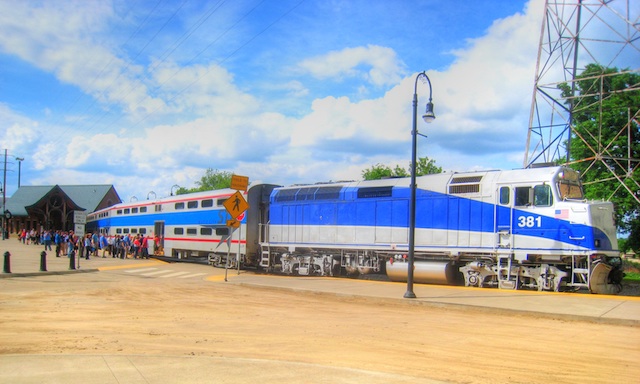The Regional Transportation Authority of Nashville is asking members of the public how the agency can make its commuter train more convenient to riders. The train, once called the Music City Star but since renamed the much less evocative WeGo Star, was supposed to carry 700 round trips a day in its first year but the closest it came was in 2018 when it carried 581 round trips a day.
In 2021, this fell to a mere 69 round trips a day. The transit agency, which also calls itself WeGo, spent $4 million operating the line but earned less than $142,000 in revenues, which works out to an operating subsidy of more than $108 per rider. The agency claims ridership is currently up to 200 round-trips a day, but even if that’s true it still represents subsidies of around $35 per rider.
Nashville-area residents should tell WeGo that there is a simple way to make the train more convenient to riders: replace it with buses. The train serves only one narrow corridor in the region, a corridor selected mainly because that’s where the tracks were, not because of a high volume of commuting within that corridor. The train ends up in a rather deserted portion of a downtown that before the pandemic had fewer than 60,000 jobs, less than 7 percent of the region, and probably little more than half that many today.
WeGo currently spends less than $2 million a year operating seven commuter bus line that collectively make 30 round trips a day. By junking the train, which makes six round trips a day, commuter bus service could be tripled, either adding new routes or increasing frequencies on existing routes.
Part of the cost of the train was paid by the federal government, which demands the return of the depreciated portion of federal capital costs when transit agencies discontinue operations. The feds paid less than $24 million nearly 20 years ago, so the amount that would have to be repaid is probably under $12 million. The transit agency could double the number of commuter buses and have enough left over to repay the feds in less than six years. If demand warrants it could then add even more commuter buses.
If it does this, WeGo should experiment with sending express buses to job centers other than downtown Nashville, something that would be difficult or impossible with trains. These might include Murfreesboro (81,000 jobs according to the Census Bureau), Franklin (79,000 jobs including a Nissan factory with more than 10,000), Hendersonville (25,000 jobs), and Spring Hill (13,000 jobs including nearly 4,000 in a General Motors facility).
Because of its focus on downtown Nashville, all of these areas are underserved by WeGo, which prior to the pandemic carried 0.3 percent or fewer commuters to each of these communities. WeGo doesn’t work particularly well for downtown commuters either, as transit carried just 5.4 percent of commuters to downtown Nashville prior to the pandemic — but that’s still 18 times the share of commuters to these other job centers.
The commuter train serves the egos of city officials who can claim that the train makes Nashville a world-class city. That would be more believable if the train carried a significant number of riders, but it is currently the second-worst patronized commuter train in the country, after the Twin Cities North Star, while the third-worst patronized line carries more than twice as many riders as the WeGo Star. Nashville leaders should set their egos aside and instead make decisions that will better serve transportation users.









Even if Nashville were designed in the medieval. Ir European inspired central cities yesteryear commuters have no incentive ride.
Buses serve all wego routes and destinations or could at fraction cost.
Germany u Bahn commuter rail has million daily riders….unimpressive for 80 million people. By contrast flix bus carries 400,000 daily riders but carries it thru 35 nations and over 100,000 destinations….